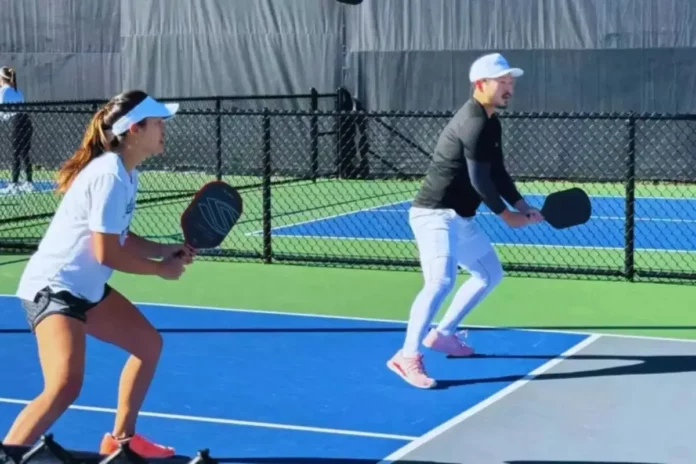Zane Navratil’s Pickleball Tips for Timing the Cross-Court Attack: Zane Navratil, Pro Pickleball athlete, recently took to Instagram to break down a shot that has evolved over the years: the cross-court attack. Once discouraged in pickleball strategy, the cross-court attack is now gaining traction as a powerful weapon. Zane Navratil, known for his precision and innovation, shared insights on how to use this technique to catch opponents off-guard and open up the court for quick returns.
View this post on Instagram
The Cross-Court Attack: Breaking Tradition
Traditionally, pickleball players avoided cross-court attacks due to the difficulty in controlling the angle and pace, which left players vulnerable to counterattacks. However, as Navratil points out, the cross-court shot has found new relevance with the rise in aggressive, fast-paced play.
With the right technique, this shot not only applies pressure but also capitalizes on opponents’ positioning, especially when they are late to react. “If I’m able to attack cross-court, I’m going to expect David to be late on that shot,” Navratil explained, suggesting that an effective cross-court attack can create a cycle of favorable returns.
Timing and Precision Are Key
Navratil emphasized the importance of timing and precision when executing this shot. Successfully attacking cross-court requires sharp footwork and control, allowing the player to maintain dominance in the rally. Navratil advised that players aim for a deep angle to disrupt their opponent’s positioning.
But he also cautioned that a poorly executed cross-court attack can have consequences, opening up angles for an opponent to counter and exploit the space on the player’s side. “If I hit a bad one, David is going to rip that at my imaginary partner,” Navratil noted, stressing that accuracy is crucial for this strategy to succeed.
Predicting the Opponent’s Response
Navratil further explained that an effective cross-court attack involves anticipating how the opponent will react. By pushing the ball into the cross-court space, he expects opponents to scramble and return to the middle, where he can prepare for a quick follow-up.
This shift in positioning often forces the opponent into a defensive stance, giving Navratil a tactical edge. This approach, as Navratil demonstrated, turns a once-dismissed shot into a dynamic and valuable part of offensive strategy.
Evolving with the Game
Navratil’s perspective on the cross-court attack reflects the ongoing evolution in pickleball. As players experiment and refine new pickleball techniques, strategies once considered risky are now becoming staples of high-level play.
Navratil’s willingness to challenge old conventions and embrace calculated risks is helping push the boundaries of competitive pickleball, inspiring other players to rethink traditional limitations and adapt to the game’s changing dynamics.

